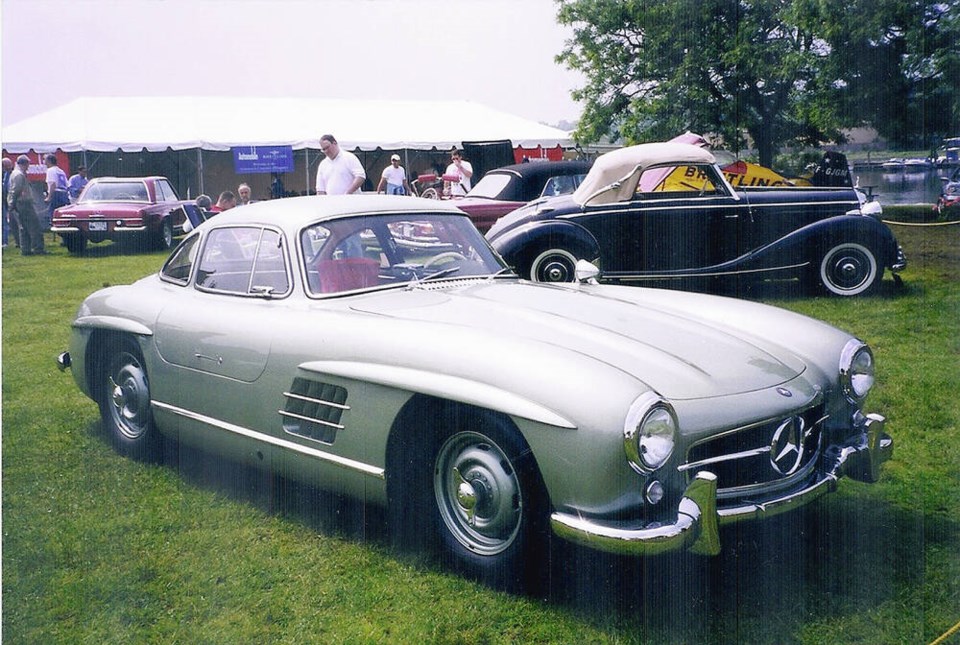Dear Readers: Bill Vance was very proud to be able to offer his faithful, loyal, and knowledgeable readers regular columns that were not only engaging and accessible, but also historically perfectly accurate and well-written. He was supremely grateful to have been given that opportunity, and he devotedly wrote for you, his dear readers, until the very end of his life.
Dad passed away on Monday Sept. 19, 2022, at the age of 86 as one of Canada’s most respected automotive historians. He had a feeling of peace that he had written for people who enjoyed his writing, and appreciated so much the work of the staff at the newspapers that carried his column.
His grandsons will work to find a good home for Bill’s incredible and hard-to-surpass automotive history library. Dad’s favourite car was the Mercedes-Benz 300SL and so here is that column, originally written in 2015.
Rest in peace, Dad, and thank you for all you gave us.
With gratitude, The Family of Bill Vance
Following the Second World War’s devastation, Germany’s Daimler-Benz, manufacturer of Mercedes-Benz cars and trucks, took until 1951 to introduce its all-new post-war 220 and 300 sedans.
With modern passenger models in production the company felt ready to pursue some of its pre-war racing glory. Daimler-Benz and German rival Auto-Union had been almost invincible in 1930s Grand Prix racing. But war had taken its toll and by the early 1950s D-B still wasn’t financially or technically ready to return to Grand prix competition.
As an interim measure it created a sports racer using M-B 300 sedan components. The 300 was not adaptable to racing but its driveline and chassis components were robust enough for competition. The 3.0 litre single overhead cam, 12-valve, short-stroke, inline six’s sturdy forged steel crankshaft was fully counterweighted and ran in seven generous main bearings. An aluminum bodied coupe with a low, aerodynamic drag (0.25 coefficient of drag) was created, designated the 300SL (for 3.0 litres, Sport and Light). Since the sedan frame was too heavy, a bridge-like “space frame” was fabricated from small diameter tubes. This was strong and light but extended halfway up the sides of the car, precluding the use of regular doors. The designers, therefore, raised the bottoms of the doors and extended the tops into the reinforced roof where they were hinged near the middle of the car and raised vertically. Quickly dubbed gullwing doors, they were the 300SL’s most striking and imitated feature. A solution to an engineering problem turned into an iconic styling signature. The high sills made entry and exit awkward so to ease driver entry the steering wheel tilted down. Once inside it was snug and comfortable compared with open sports cars, and had excellent visibility.
The 300 sedan’s 2,996 cc modestly stressed engine produced just 115 horsepower at 4,600 rpm. But it was strong enough to reliably develop more than double that; when the production 300SL was introduced it was rated at 240 horsepower. Carburetors were used during development, but production model got Bosch mechanical fuel injection, the world’s first four-stroke, gasoline-engine production car to have this feature. It also got racing-type dry-sump lubrication, and to clear the low hood the engine was tilted 50 degrees to the left.
The 300SL quickly made its mark in competition, winning, among others, the 1952 Le Mans, France, 24-hour race and Carrera Panamericana (Mexican Road Race). It was also successful in rallying. After pointing the way to D-B’s return to Grand Prix racing, the 300SL would likely have been relegated to D-B’s museum like other M-B racers. Before this occurred, however, events took a turn with the intervention of Max Hoffman, Mercedes-Benz’s New York-based American distributor. Hoffman was the imported car czar of the United States. He had keen marketing sense and his Manhattan dealership sold everything from Volkswagens to Rolls-Royces. Hoffman became a Mercedes distributor in 1952, and when he saw the Mercedes-Benz 300SL sports racing car he knew it would sell in America. He implored D-B to make it a production model, and backed up his conviction by ordering 1000 of them.
The opportunity was too good for D-B to pass up. The production Mercedes-Benz 300SL gullwing coupe, and less potent four-cylinder 190SL convertible, made their debut at the New York Auto Show in February, 1954. The 300SL was a sensation with the public and motoring press, and production began in the summer of 1954. The 300SL fulfilled its performance promise. Road & Track (4/55) reported the 1,229 kg (2,710 lb) coupe accelerated from zero to 97 km/h (60 mph) in 7.4 seconds, and to 161 (100) in a mere 17.2 seconds. It reached a two-way top speed average of 216 km/h (134.2 mph). R&T called it “…the ultimate as an all-round sports car,” concluding that “The sports car of the future is here today.”
The 300SL had a hefty price -- some $8,000 -- a lot of money when a new Cadillac could be had for $5,000. This, in part, is probably why only 1,400 gullwing coupes were produced from 1954 to ‘57. It was replaced by a roadster with a frame modified to allow conventional doors, and with D-B’s low-pivot rear swing axle assembly replacing the traditional swing axles. Four-wheel disc brakes came in 1961, and the roadster remained in production until 1963; 1858 were built. The Mercedes-Benz 300SLs left an indelible impression because it had everything. Fuel injection was a significant engineering advance. It had outstanding performance, impeccable racing credentials and the cachet of those gullwing doors, which M-B recently reincarnated in its SLS model.
The 300 SL is one of history’s great automobiles, even though it was not originally intended for production. It has become a very sought after and expensive collectible



